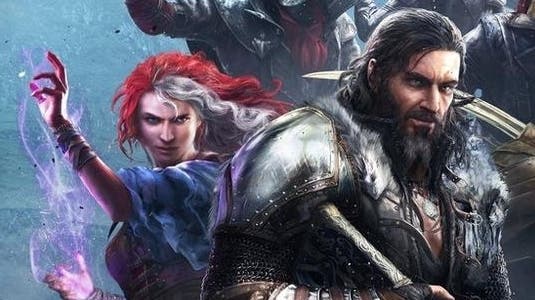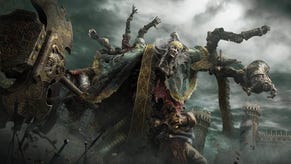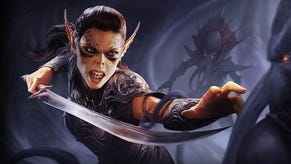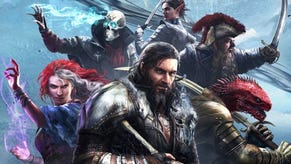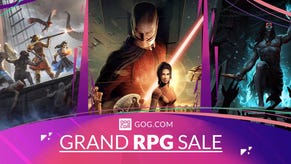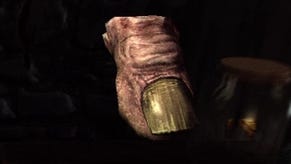Divinity Original Sin 2 on Switch is the perfect handheld complement to the PC game
The cross-save mechanic is superb - but does the port itself hold up?
Among the most celebrated RPGs to hit PC over the last few years, Divinity Original Sin 2 makes a surprise debut on Switch with a unique and compelling new feature: the ability to share saves with the Steam version of the game, effectively allowing you to take your game on the go, then return your progress back to the PC version. We've seen the rise of cross-play in the likes of Fortnite, but this again shows Switch coming into its own as a perfect complement to the home experience - but beyond the intriguing cross-save mechanic, can such a complex, challenging game transition effectively to Nintendo's console hybrid?
Of course, Divinity 2 is quintessentially a PC experience. From its lush visuals - a vibrant mix of forests and dungeons powered by developer Larian's in-house engine - down to its turn-based RPG mechanics, it's rich with fine detail. It's so dense with options, in fact, that I had doubts that a satisfying portable version would work at all. Beyond the usual constraints involving Switch's limited CPU and GPU power, there's also the matter of transitioning the core UI across. And yet, a port exists - and the developer has risen admirably to the challenge.
Yes, there are big cutbacks. It's unavoidable. A 39GB PC game install is pruned back to 11GB, after all. As ever though, it's a matter of which cutbacks can you accept to get the benefits - and Larian appears to have made smart choices. This is fundamentally a feature complete version of Divinity 2, right down to a four person multiplayer option, and the freedom to carve out your own path using your chosen character's abilities and traits. Visually speaking, the art direction comes through effectively despite a huge hit to resolution, whether playing portably or docked. Equally, the reduced frame-rate is something of a distraction. 30 frames per second is the target, and the game can drop a lot lower, but as a turn-based game, the impact isn't quite as dramatic as that sounds on paper.
Divinity 2 on Switch runs with a dynamic resolution setup and so that means while docked you're hitting 1280x720 at best, albeit with a 900p UI redesigned especially for this version. Pushing the engine hard while docked, resolution can drop down to 1088x612 in heavier scenes. The presentation is supported by a pass of FXAA anti-aliasing, which does a reasonable job of keeping most jagged edges at bay. The setting is a decent match for the PC version but in common with many of Switch's most challenging ports, the result is simply a lot blurrier.
In terms of the pure, mechanical side of the game, the Switch version is still intact despite this, largely thanks to the UI being so clear. The team has gone to great lengths to make the user interface look the part on console. Even on Switch's smaller screen it looks clean and easy to follow, scaled properly for readability. Swapping into portable mode, the native resolution is altered in step, owing to its reduced GPU clocks. The visuals are rendered at 1152x648 in this case, as the top number. The lowest I've caught so far in the most taxing scenes is 880x495. Expectedly the results are hardly pin-sharp - and it's likely the first thing you'll notice when moving from any other version.
Working on Switch won't have been without its challenges. On top of cutting the install to 11GB, the team had to adapt to just three available CPU cores on Switch, and just 3.5GB of usable RAM. Based on conversations with the developer, the port took just under a year in total to complete, and adapting the engine itself wasn't too arduous. Overall, it seems it was the CPU limits on Switch - with just three cores - that needed the most work. The game is full of sub-systems, calculations under the hood, plus a physics engine that needs to be optimised to work around a stricter CPU budget. The fact that four-person multiplayer support is working at all surprised even the developer - who originally targeted just two players online.
Visually speaking, any comparisons with the PC release will be brutal - but it's fascinating to see how close it gets. On top of the cut-back resolutions, most of the settings on Switch are pruned back in some way. Polygon counts on certain models are reduced, and texture resolution is also cut down to help fit into the smaller RAM allocation. A customised cascade shadow system is included too, meaning the fade-in for shade is different on Switch overall, while ambient occlusion is stripped back too. Despite the many compromises, some big features still make the cut: lighting detail is kept at PC's medium setting, for example - though light shafts are removed. Plus, we get FXAA anti-aliasing, and bloom is enabled too.
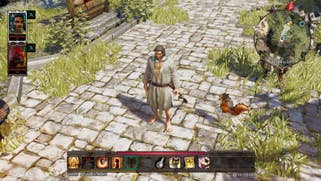
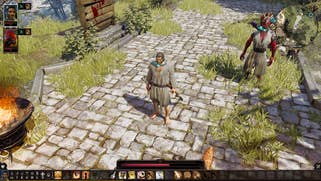


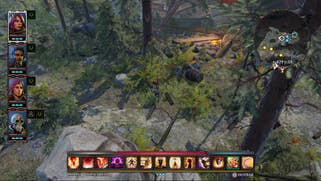
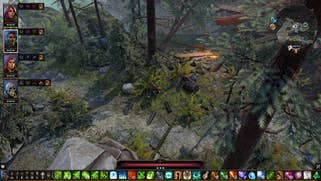
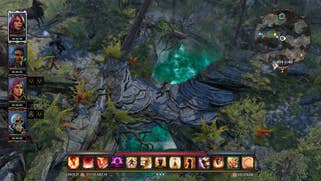

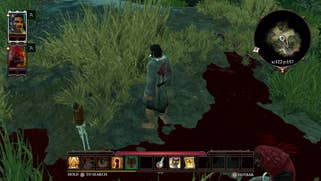
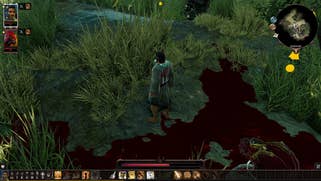
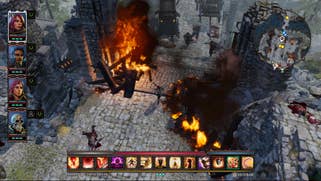

On balance it's clear that a lot of core settings are compromised. Even so, there's so much detail maintained here. Lush forest areas still look dense with vegetation, and the geometric framework of the cliff-sides is intact too. In terms of the framework it's the same game as the PC original; it's just that some of the sugar-coating over the top is removed. It's fair to say it's recognisable as the same game, and that's really the aim here. Again, I'm getting flashbacks to The Witcher 3 as a recent example of an 'impossible port' made possible by smart changes - tweaking the visuals in a way that still leaves a decent-looking game. The comparisons aren't flattering next to the PC version hitting 60fps - but what we're left with is still up there as one of the better looking Switch games.
One unavoidable compromise concerns the control interface. Rather than pointing and clicking your way through with a mouse, movement is handled in a more direct fashion with the analogue sticks. In battle, pressing the Y button takes your cursor to the hotkey bar at the bottom, for you to select your move. If you've played on PS4 or Xbox One already, it's the same deal on Switch. It's the best Larian could do without the option of a mouse and keyboard. Overall, it's fine for traversal, but in battle, it's a little more cumbersome. It's also a shame that the touchscreen isn't used at all here to give you more direct access to those crucial hotkeys.
Another area that stands out is loading times. Despite drawing lower-grade textures and effects to its RAM, Switch still takes longer to load new areas - and it's a regular occurrence too. Later in the game you'll be warping between spots and you're likely to be restarting from saves states quite often, given the difficulty. It's in line with expectations, but going from an SSD-equipped PC - where loading saves is near instantaneous - definitely affects the experience - but this is the price you pay to have this game available in a portable form-factor.
The overall turnout in terms of the presentation and the mechanics, is largely as good as you can hope for. The cloud save system is, of course, the real achievement though. It involves signing in to your Steam account via the Switch; from there saves automatically sync on a button press, and while it may take a few minutes to populate the list, it genuinely works. There is one caveat though: if you've dabbled with mods on PC, the Switch version requests the relevant mod packages and files. Obviously, there's no way to download those, and so it just fails to load that save. So be warned, combining mods with this version doesn't work - it's looking for the vanilla save file.
Performance is a bit of a mixed bag, but thankfully Divinity 2 isn't a fast action game that relies heavily on smooth frame-rate. Generally, I found that starting a new game, and wondering around Fort Joy didn't give me much of a problem, with fairly consistent 30fps gaming, properly frame-paced. There are hiccups mid-dungeon, just as the game auto-saves, which can be a distraction - but in general it's much better than I expected on the portable front.
The later game areas tell a different story. Keeping with portable mode, the game can dip to mid-20fps territory - and potentially lower. Indeed, taking a progress save in even docked play, we can even hit around 10fps in the extremes when stress-testing with a concentration of area effect spells. A frame-rate low of 10fps is unimpressive - but, in fairness, this does occur when movement is out of your hands anyway. Whether you can accept those drops - which are pretty sizeable - is down to how engrossed you are in the game itself. If you see this Switch version as a handheld extension of the PC experience, it's easier to forgive it. However, if this is your first and only impression of Divinity 2, and you're playing the whole game this way, it's a harder recommendation. As impressive and as mechanically complete as this port is, I just don't feel it's the ideal way to interact with the incredible world that team has created.
On balance, Divinity Original Sin 2 on Switch is another 'impossible port' made real, thanks to a lot of careful design choices. Flawed as it is, I'm glad this exists. There's not a huge amount of value to playing purely docked in my view, but it's uncontested as a handheld take on the game. Add in the online save sharing and it's a very big deal for fans of the desktop experience. As for the developer's credentials, the team's ongoing support for the Divinity series only bolsters its reputation. Its next project is Baldur's Gate 3, understood to be based on the same technology as Divinity - so fingers crossed that this is being treated as a dipping of the toe, an impressive first effort with the promise of something more for future Switch projects.
